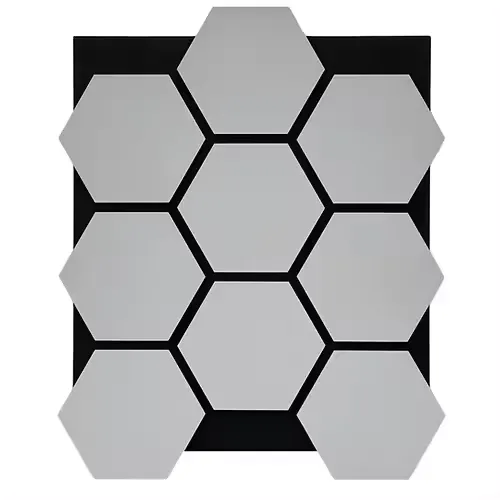The Benefits and Applications of 9mm Acoustic Felt
In the realm of soundproofing and acoustic treatment, materials play a crucial role in enhancing the auditory experience of spaces. Among various options available, 9mm acoustic felt stands out for its versatility, effectiveness, and aesthetic appeal. This article explores the characteristics, benefits, and applications of 9mm acoustic felt in different settings.
What is 9mm Acoustic Felt?
Acoustic felt is a type of sound-absorbing material designed to reduce noise levels and enhance sound quality. The 9mm thickness offers a good balance between sound absorption and structural integrity, making it suitable for a variety of applications. Typically made from polyester or recycled fibers, this felt is not only effective in controlling sound but also environmentally friendly.
Benefits of 9mm Acoustic Felt
1. Sound Absorption One of the primary advantages of 9mm acoustic felt is its ability to absorb sound waves. The 9mm thickness provides a resonant medium that helps to reduce echoes and reverberation, making spaces more acoustically balanced. This is particularly beneficial in environments such as recording studios, theaters, and conference rooms where sound clarity is paramount.
2. Aesthetic Versatility Acoustic felt comes in a range of colors and textures, allowing designers and architects to incorporate it seamlessly into their projects. Whether it’s used for wall panels, ceiling tiles, or decorative elements, 9mm acoustic felt can enhance the visual appeal of any space while serving a functional purpose.
3. Easy Installation This material is lightweight and easy to handle, which simplifies the installation process. Whether it’s glued, stapled, or mounted with adhesive backing, 9mm acoustic felt can be quickly applied to various surfaces, reducing labor costs and installation time.
4. Durability and Maintenance Most acoustic felts are designed to withstand wear and tear, making them suitable for both commercial and residential applications. They are also relatively easy to clean, requiring only occasional dusting or vacuuming to maintain their appearance and performance.
9mm acoustic felt

5. Eco-Friendly Options With a growing awareness of environmental issues, many manufacturers now produce acoustic felt using recycled materials. This eco-friendly aspect not only contributes to sustainability but also appeals to conscious consumers looking to reduce their environmental footprint.
Applications of 9mm Acoustic Felt
The applications of 9mm acoustic felt are vast and varied, spanning multiple industries and settings.
- Commercial Spaces In office environments, acoustic felt can be used to create quiet zones, meeting rooms, and open spaces that enhance productivity by reducing noise distractions. Companies often use acoustic panels to create a more pleasant and professional atmosphere.
- Educational Institutions Schools and universities benefit greatly from the use of acoustic felt in classrooms, auditoriums, and libraries. The material helps diminish background noise, allowing for better concentration and communication, which is vital for effective learning.
- Entertainment Venues Music studios, theaters, and concert halls employ 9mm acoustic felt to enhance sound quality for both performers and audiences. By controlling sound reflections and preventing sound leakage, these spaces can deliver a superior auditory experience.
- Residential Use In homes, acoustic felt can be installed in entertainment rooms, home theaters, or offices to create a more serene environment. It can also serve as decorative wall art or panels that contribute to the overall design while providing acoustic benefits.
Conclusion
In summary, 9mm acoustic felt is a practical and functional material that combines sound absorption with aesthetic versatility. Its benefits make it an ideal choice for various applications across commercial, educational, entertainment, and residential sectors. As the demand for improved acoustics continues to grow, 9mm acoustic felt stands out as a reliable solution for creating sound-friendly environments that cater to the needs of modern living and working spaces. Whether for practicality, design, or environmental reasons, this material is worth considering for any sound treatment project.
